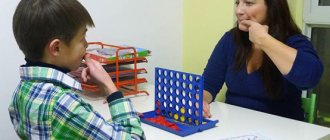How to create an individual study plan
It is compiled by school employees. The main principle in compilation is to include in it items that are mandatory for the general education school curriculum. At certification, a child who has studied under the IUP goes through the same tests as his peers, without any concessions or special conditions.
Mandatory points of the IUP:
- the IUP includes all compulsory subjects at the basic level;
- include additional items at the basic level;
- include a regional component - those subjects that are required to be studied in specific regions of the Russian Federation (region, republic);
- take into account the requirements for students adopted at the school in which the student is transferred to the IEP.
General algorithm for making a curriculum:
- Talk with the student and his parents, find out all the features, the purpose of the transfer, the needs of the student.
- Determine the child’s level of knowledge, what he has learned, what he can do.
- Study the basic curriculum. The federal basic curriculum and exemplary curricula are in the appendix to the Order of the Ministry of Education of the Russian Federation dated 03/09/2004 No. 1312 “On approval of the federal basic curriculum and exemplary curricula for educational institutions of the Russian Federation implementing general education programs.”
- Study the school's educational program.
- Compile an IEP based on these data.
Sample of a student's individual educational plan
Features when eliminating academic debt
The transition to the IEP is an opportunity not to leave the child for the second year, but to conditionally transfer him to the next grade. In this case, an individual curriculum for academic debt is drawn up so that the student improves in problematic subjects, passes the debt and continues his studies.
What is an individual curriculum
A curriculum is a document that describes in detail what subjects schoolchildren study, how many hours are devoted to studying each subject, in what sequence the training takes place and how it is controlled. The difference between an individual plan and a regular plan is established by the law on education: an individual educational plan (IEP) takes into account the characteristics of a particular student and his learning needs. When developing an IEP, the basic program is adjusted to the student’s capabilities so that he can successfully cope with his studies.
What are the features of IEP
The main task is to provide the child with an education taking into account his characteristics, choosing the optimal level of educational programs for him, the pace and timing of training. With the IEP, it is allowed to change the list of subjects, the depth of their study, and the sequence of studying subjects during the academic year. But there is an important limitation: the procedure for organizing training according to an individual curriculum should not go beyond the federal state educational standards of general education (FSES).
Peculiarities:
- Ability to change the complexity of training. It is allowed to reduce or increase the hourly load. If a subject is taught at a basic level at school, a student in the IUP is allowed to study at an advanced level in that subject. For example, study mathematics in depth at a school with a humanitarian focus. If at school a subject is studied at an in-depth level, the student at the IEP is allowed to be given material at the basic level. For example, in a school with a mathematical bias, study geometry and algebra at a basic level.
- Ability to change the sequence of study. If a school provides instruction in all subjects at once, a student using an individual plan is allowed to study subjects sequentially, in the form of blocks or modules. For example, first study the entire chemistry course, then the entire physics course, then the Russian language course. It is allowed to combine sequential and parallel study, when one or more subjects are taught weekly during the year, and the rest are studied in blocks.
- Ability to change the list of items. It is allowed to add or remove subjects to the curriculum if this does not contradict the Federal State Educational Standard.



